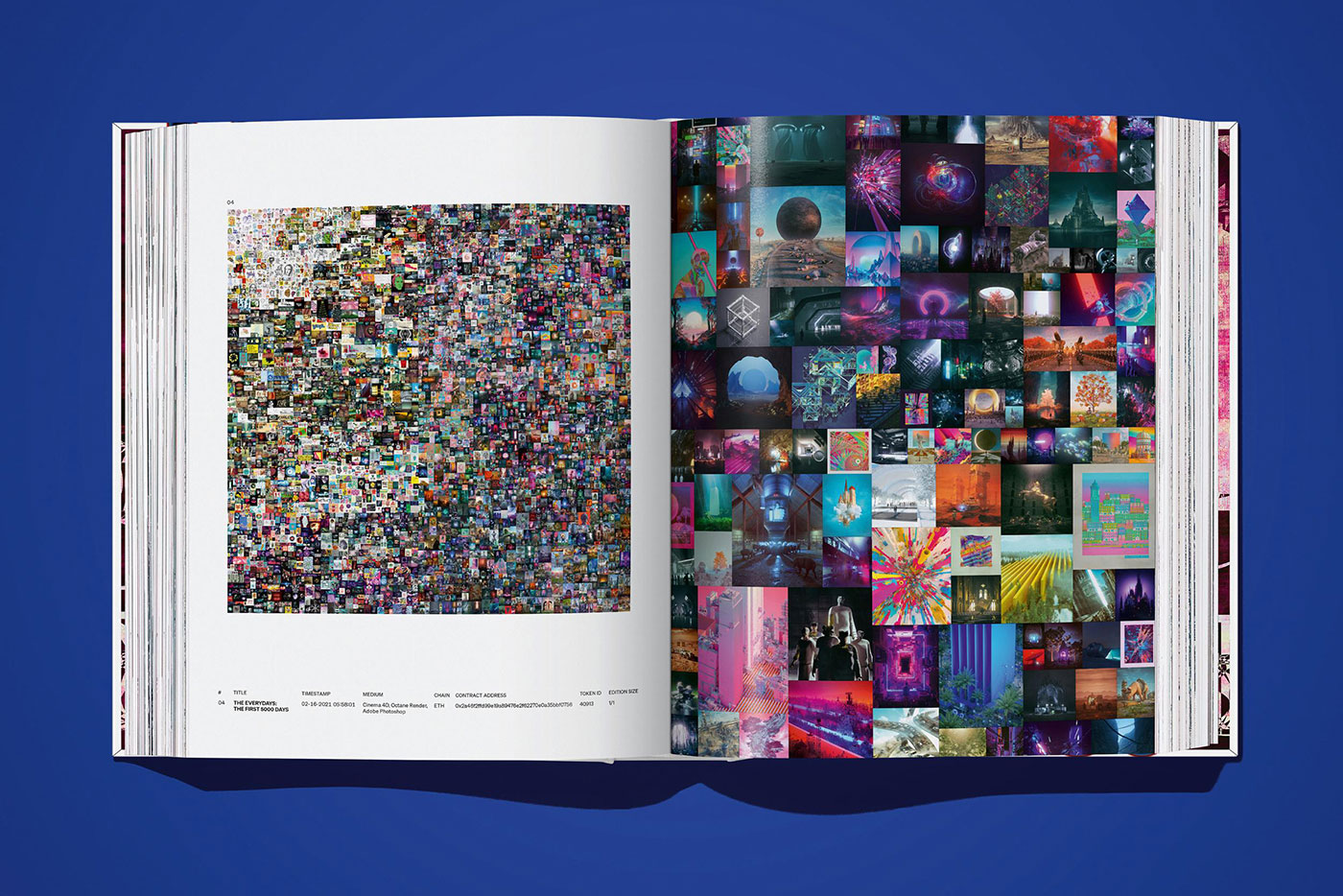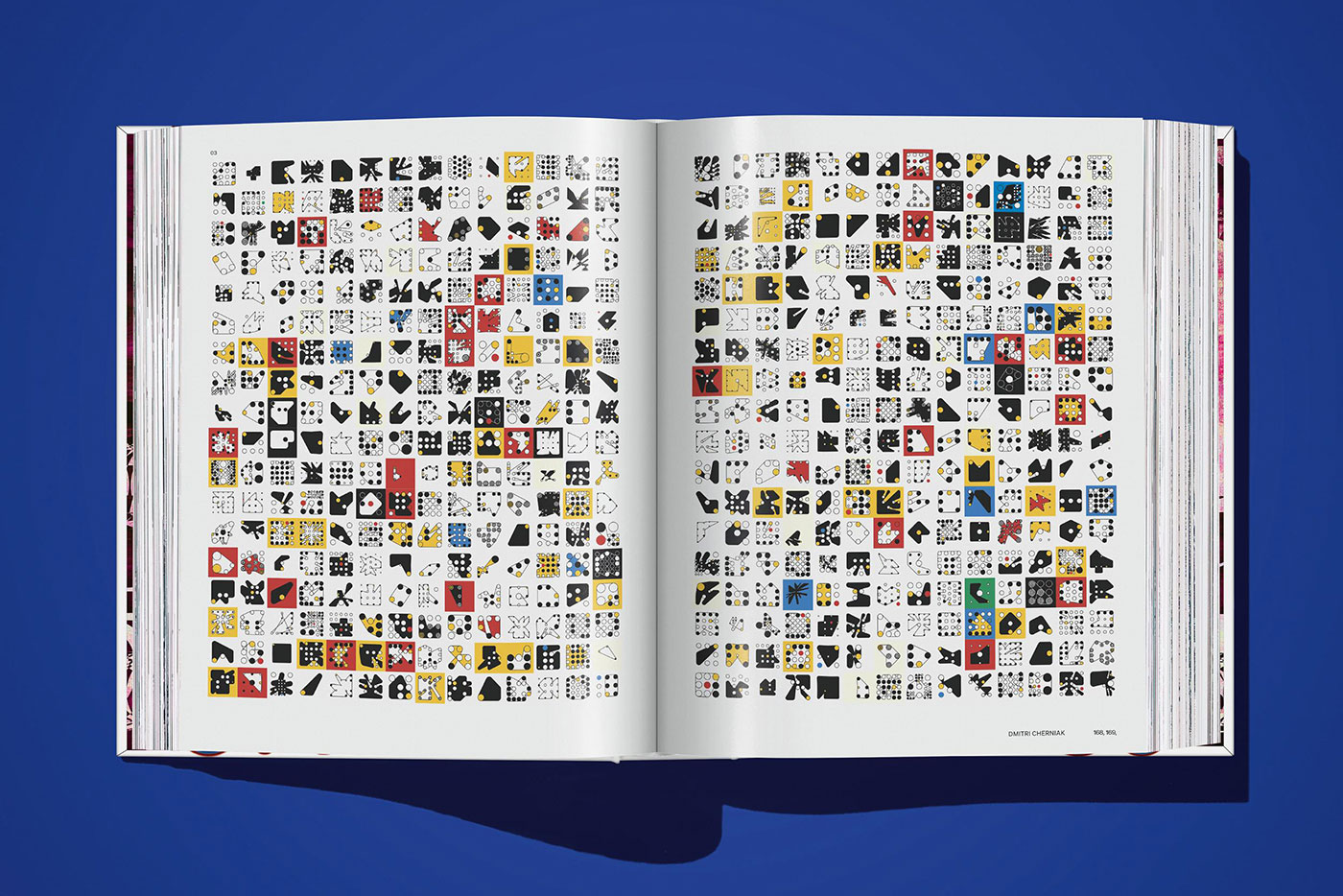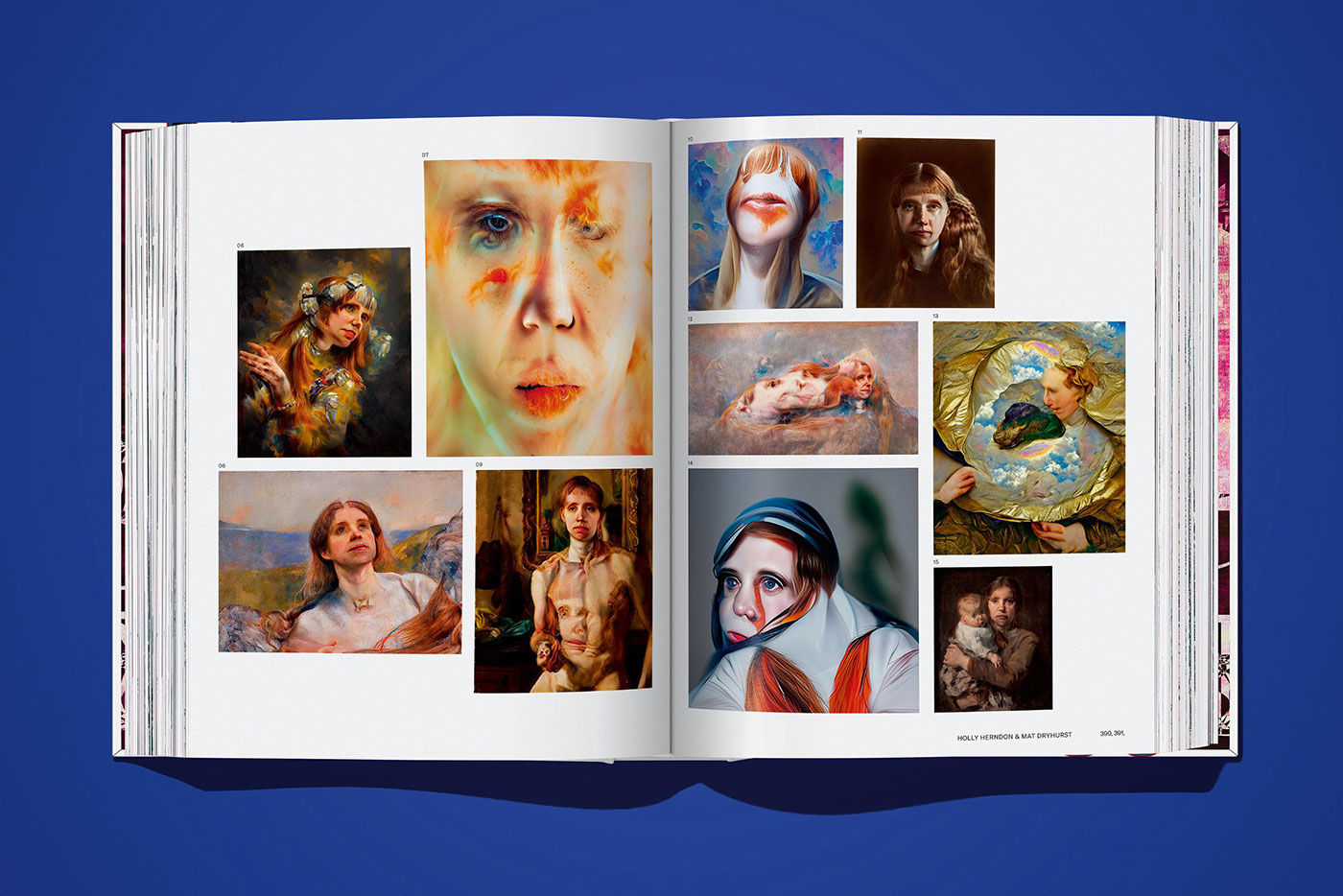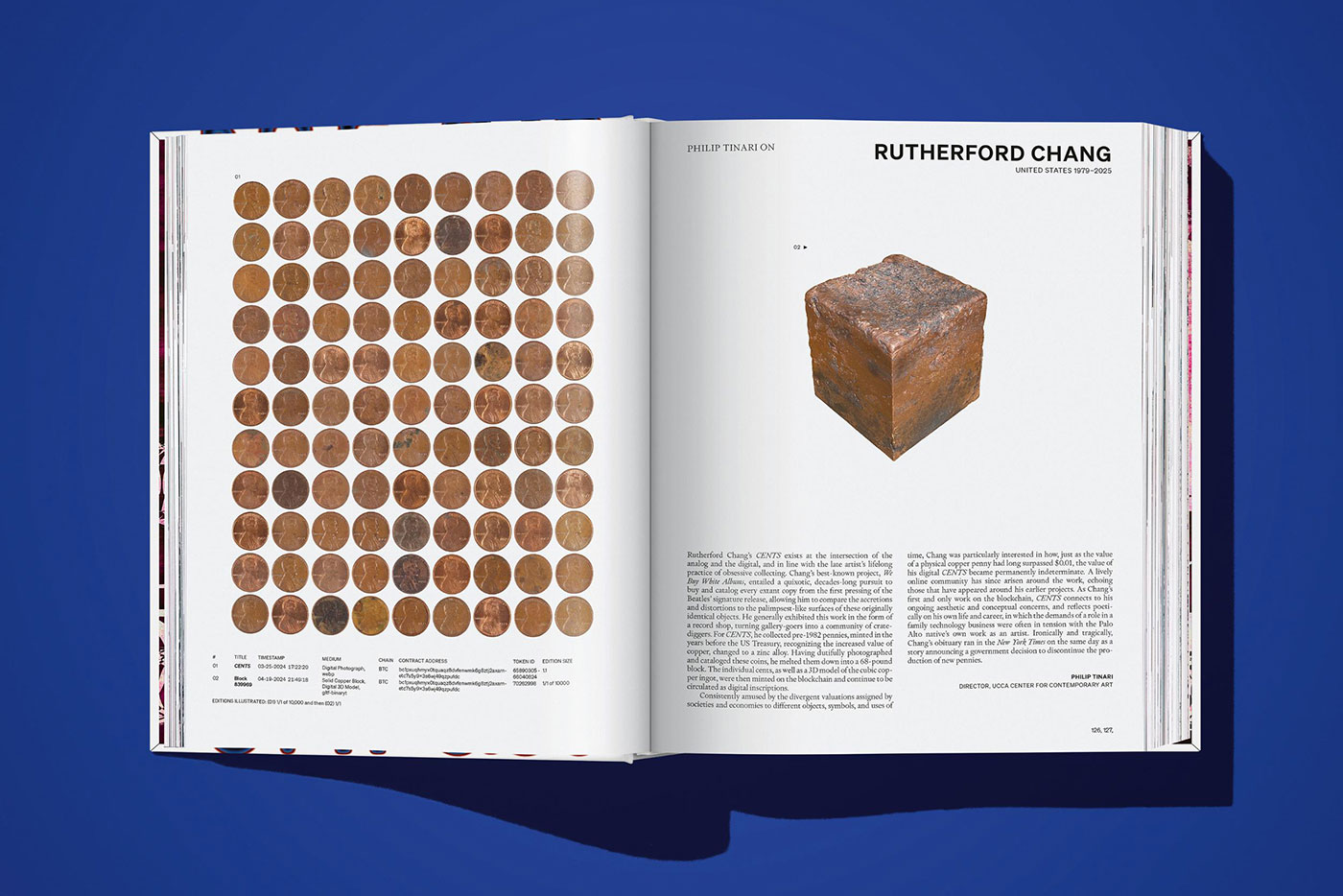
Robert Alice (editor), On NFTs, is published by Taschen (US$50 or £40 sterling).

The new edition carries the same cover artwork, but new endpapers, 11 new artist profiles, and additional photographs to update the section on the history of NFT exhibitions.

The educational, art historical value of the book starts now, by getting it into as many people’s hands as possible. Curators, young collectors, artists, students, can pick up the book and they can learn.

As with all such compendiums, you ask yourself the question, “Who will be around when dust settles in 50 years’ time?How will the race be won, historically?”

Books have been tested over hundreds of years. They don’t need to be changed. And the technology hasn’t changed.

They are ultimately an art project, but they are also a piece of design. They sow the seeds of what we’re trying to achieve with a physical book on a digital medium: by giving this physical object the character of the algorithm.

I think maybe that 2024, ironically, was possibly the worst time you could launch a £1,500 book on NFTs. It was peak NFT bear market.

But this is a generational adventure. I actually think that this book will be more relevant in 30 years’ time than it is today. That there’ll be more people interested in it in 30 years’ time than in five years’ time.

But I think that NFTs, or digital art, won’t fulfil their potential for another generation. I don’t think we’re the generation that will fulfill that potential.

I think as real-world assets come on to blockchain as NFTs, if that happens, there will be art and digital art, and digital art NFTs will be some minuscule percentage of all NFTs.

Robert Alice makes art, exhibitions, and books that investigate blockchains and their histories. Alice’s work is collected in public collections and libraries internationally, including the Centre Pompidou, Los Angeles County Museum of Art (LACMA), Bibliothèque Kandinsky, and the Monnaie de Paris. Alice’s work has been subject to reviews by leading curators such as Hans Ulrich Obrist and published in The New York Times, Financial Times, CNN, Forbes, ArtReview, ArtNews, The Art Newspaper, and more. Alice was the first artist to sell an NFT at a major auction house, and their landmark work Portraits of a Mind (2019 -) has been credited as one of the early catalysts behind the subsequent rapid growth in the blockchain art space. The project is now part of the National Collection of France.
Exhibitions of their work have been held internationally, including shows at Monnaie de Paris, Paris; Ullens Center of Contemporary Art, Beijing; Christie’s, New York; Sotheby’s, London and Hong Kong; Palazzo Lolin, Venice; Francisco Carolinum, Linz; Kunstverein Hamburg, Hamburg; the JinArt Center, Shanghai; and Le Freeport in Singapore among others. In 2021, Alice curated “Natively Digital” at Sotheby’s, bringing historic works to market, including Kevin McCoy’s Quantum (2014) — the first NFT ever made. The sale raised $17.1 million, setting records for several artists. A majority of the sales went directly to artists. A trained art historian, Alice has lectured internationally on blockchain-based art, most notably co-producing the first academic conference on NFTs at the University of Oxford in 2022, entitled 0xBAT, where they opened the conference with a keynote on a theory of NFTs. Alice has been a guest lecturer on blockchain culture at Central Saint Martins, Columbia University, Christie’s Education, King’s College London, and Oxford University.
Louis Jebb is Managing Editor of Right Click Save.

